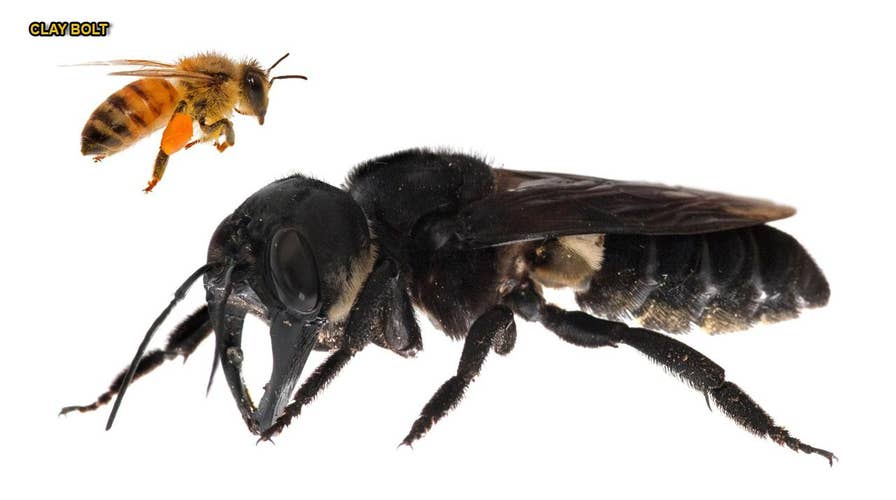World's largest bee with giant jaws rediscovered in the wild
In January scientists finally spotted a rare bee, which was last seen by researchers in 1981 and previously feared to be extinct. Wallace's Giant Bee (species Megachile pluto) is an Indonesian species with a 2.5-inch wingspan and enormous mandibles. A solitary female bee was finally seen in the Indonesian province of North Maluku on the Maluku Islands, after researchers investigated the region for five days.
You'd think that the world's biggest bee would be hard to lose track of. But Wallace's Giant Bee — an Indonesian species with a 2.5-inch (6.4 centimeters) wingspan and enormous mandibles — was last seen by researchers in 1981; it was feared to be extinct.
However, scientists finally spotted the rare bee in January, in the Indonesian province of North Maluku on the Maluku Islands. They detected a solitary female bee after investigating the region for five days, and a photographer captured the first-ever images of a living Wallace's Giant Bee (Megachile pluto) at the insect's nest in an active termite mound.
"It was absolutely breathtaking to see this 'flying bulldog' of an insect that we weren't sure existed anymore," photographer Clay Bolt, who captured the images of the giant, said in a statement published by The University of Sydney in Australia. [In Photos: Bee Eyes and Meat-Eating Plants Light Up Micro-Photo Contest]
Little is known about these elusive insects' habits. The bees' dark-colored bodies measure about 1.5 inches (3.5 cm) in length — about as long as a human thumb — and they build communal nests on termite dwellings in trees, Adam Messer, a researcher who was with the Department of Entomology at the University of Georgia in 1984, wrote in a study published then in the Journal of the Kansas Entomological Society.
More From LiveScience
Messer was the last scientist to document the supersize bees in the wild — until now.
"Messer's rediscovery gave us some insight, but we still know next to nothing about this extraordinary insect," Eli Wyman, an entomologist at Princeton University and one of the researchers who rediscovered the lost bee, said in the statement. The rediscovery could help researchers learn more about the elusive bee, Wyman added.
- On the Hunt: Honeybee Scouts Find Food
- Here's What Wasp Faces Look Like Up-Close
- Photos: Amazing Insects of the North American Deserts
Originally published on Live Science.





















